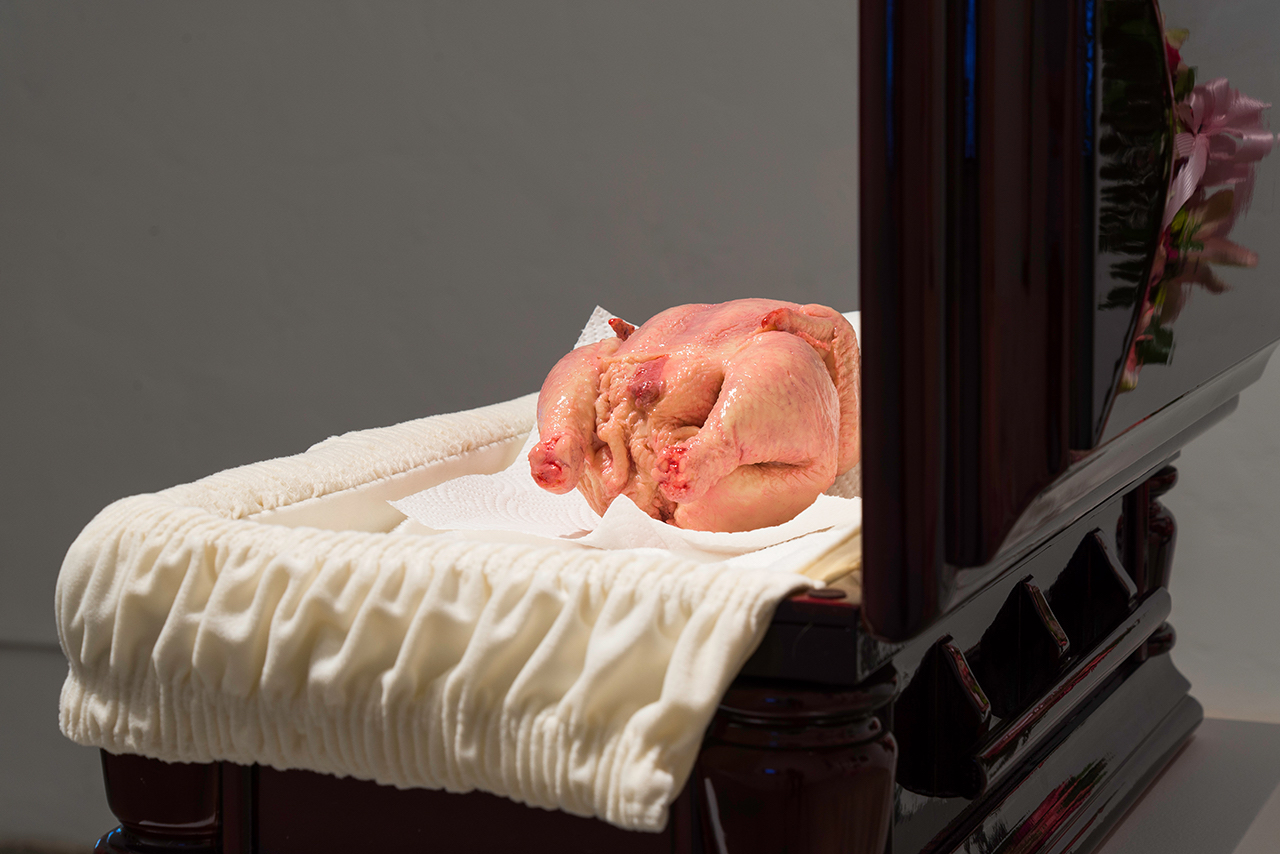#10
Rooster heralds castrated Greek god—
Nordic rooster perches atop tree of life—
Slavic hut walks on chicken legs—
Siberian shrines

Jeffrey Vallance, Blinky in Coffin—detail (2018) Found objects
36 x 20 x 20 inches
In classical Greek mythology, the rooster heralded the soul of the deceased and was their spirit guide to the underworld. The rooster is also the emblem of classical sun-god Attis, who castrated himself, died, and came back to life again. In his self-castration, death and resurrection, Attis represents the fruits of the earth, which die in winter only to rise again in the spring.
In Norse mythology, the rooster is a symbol of vigilance. In Valhalla, a golden rooster named Gullinkambi (golden comb) perches on the topmost branches of Yggdrasil (the Tree of Life) whose crowing warns the gods of the approaching Ragnarök (Nordic Apocalypse). In Slavic folklore from northern Russia and Finland, the character Baba Yaga is a wisewoman who dwells deep in a birch forest in a strange hut that stands on large chicken legs. The hut can walk around by itself. The hut on feet brings to mind Saami (Lapp) storehouses built on stilts, as well as smaller versions used as shrines by Siberian shamans to hold images of their gods.
